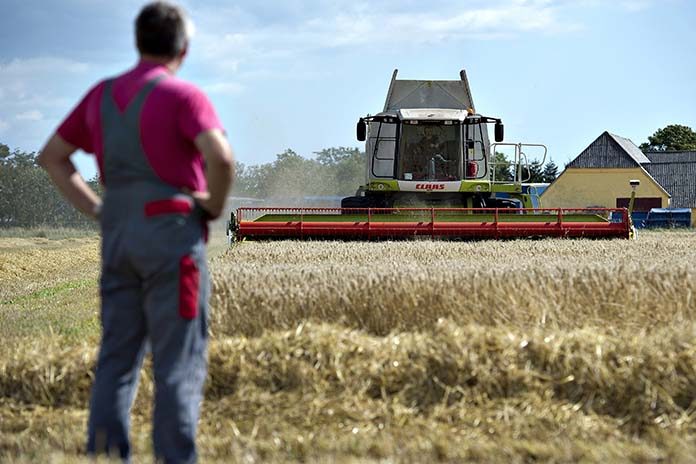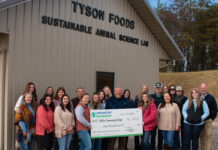
Crude analyses of sustainable global resource use suggest that the peak rate year for commercial poultry production was reached in 2006 while projections indicate the need to deliver optimal and sustainable diets for 9 billion people by 2050. In addition, despite increases in agricultural production over the past two decades, malnutrition rates have not diminished significantly, with undernutrition remaining a significant problem in many developing countries and overnutrition becoming a major issue globally. Consequently, the past focus on increasing the quantity of food production is giving way to a focus on producing quality food that is nutrient, rich, bioavailable and affordable and that can efficiently and sustainably meet the nutritional needs of individuals at every stage of life.
This paper discusses key challenges and potential solutions associated with:
i) Increasing food production by providing diets tailored to individuals according to their life stages and cuisines of sub-populations, producing nutritionally rich foods, increasing dietary diversity and empowering women;
ii) Decreasing food wastage by decreasing post-harvest losses, increasing the purchase of appropriate quantities of nutritious food, increasing food safety and decreasing nutrient loss.
While certain production systems may have peaked, food technology is not static and will play a crucial role in meeting food requirements. Moreover, it is important that our food systems can ensure that people have access to affordable, nutritious foods at every stage of life. The mandate of the Food and Agriculture Organization of the United Nations (FAO), established at the end of the Second World War, prioritises “ensuring humanity’s freedom from hunger”. Farmers and agricultural researchers responded to this challenge with huge increases in agricultural production since the 1950s. However, the focus has generally been on the volume of food produced with the farm gate prices being determined by weight, i.e. focussed on quantity rather than quality. Projections show that feeding a world population of 9 billion people in 2050 would require raising overall food production by some 70 percent between 2005/07 and 2050. In addition to requiring increased food production, we also require diets targeted to individual needs appropriate to the life stages and the cuisines of sub-populations.
Despite increases in agricultural production over the past two decades, malnutrition rates have not diminished significantly, with undernutrition remaining a significant problem in many developing countries and overnutrition becoming a major issue globally. These trends are reflected statistically with: 200 million children under the age of five who are stunted or wasted due to under nutrition; two billion people suffering physical and cognitive effects resulting from a lack of essential vitamins and minerals in their diets; and 1.4 billion people who are overweight or obese.
Nationally, the 2011-12 Australian Health Survey (AHS) nutrient intake data demonstrated significant nutrition-related issues, for example: (i) 62.8% of Australians aged 18 years and over were overweight or obese, (with 35.3% overweight and 27.5% obese); and (ii) one in eight Australians over the age of two years had an inadequate daily intake of iron. Women in particular had poor intakes of iron with 23% not meeting requirements compared to only 3% of men, and the prevalence was highest amongst women of reproductive age (14-50 years). These nutritionally-related health conditions have an impact on food requirements both now and into the future. This is tackled in the Sustainable Development Goal #2 which aims to end hunger, achieve food security and improved nutrition, and promote sustainable agriculture. Nutrition-sensitive food value chains will be vital to achieving this goal as will be adopting an Ecohealth framework. EcoHealth can be defined as the recognition that “health and well-being are the result of complex and dynamic interactions between determinants, and between people, social and economic conditions, and ecosystems”.
In addition to providing nutrition for humans, our food systems currently provide nutrition for companion and intensively raised farm animals. As human population increases the number of companion animals has tended to increase, and pet food has changed in parallel with the changing roles of these animals in human society. With increasing pressure on agricultural production, assessing the competing needs of humans, animals and the environment becomes increasingly important.
Of the multitude of challenges facing our food systems, this paper specifically highlights key challenges and solutions to this through increased food production and decreased food wastage.
Key challenges and potential solutions
a) Increasing the sustainable production of nutritious and safe food
As noted above, human population is set to reach 11 billion by 2100. This increase will be accompanied by increasing urbanisation, an increasing middle class and aging population together with a smaller rural labour force and more feedstock for a potentially huge bioenergy market. Challenges and possible solutions to increasing the sustainable production of nutritious and safe food include:
- Providing diets tailored to individuals according to the life stages and cuisines of subpopulations – Future food production will need to specifically target the nutritional requirements of individuals according to their age, gender and reproductive status while also employing efficient technologie This is a major commercial opportunity that should inspire public-private partnerships. Urban food production will need to complement that produced by farmers in agricultural areas.
- Producing nutritionally rich foods – Accessing sufficient calories is important, but calories alone are not enough to optimize epigenetic programming; the proper balance of micronutrients is also essential for both short- and long-term healt This has become clear, as obesity and related health concerns are becoming significant issues in individuals and communities adopting western diets. Therefore, instead of focussing solely on volume or weight, it will be important for food producers to increasingly take the naturally nutrient-rich (NNR) score (which assesses the contribution a food makes to the nutrient intake of a 2000 calorie, or 8360 kJ, daily diet and includes 14 key macronutrients) into account to produce whole foods that provide the highest nutrient-to-kilojoule ratio.
- Where animal source food (ASF) is concerned, it should ideally mimic the naturally lean wild meat consumed by humans over thousands yea As the human gene line separated from the great apes about 5–7 million years ago, the human genome is largely ancient with our physiology and genomics remaining adapted to wild foods. Wild meats are naturally lean. Wang et al. (2009) report a substantial increase in the amount of non-essential fats and a loss of essential fats derived from contemporary animal husbandry, including poultry meat, a trend which needs to be reversed.
- As we move into the future, food production programs will need to: explicitly incorporate nutrition objectives and indicators; collaborate and coordinate with other sectors (health, environment, social protection, labour, water, sanitation, education and energy); and maintain or improve the natural resource base (water, soil, air, climate, biodiversity). While in vitro meat may provide a source of protein, it does not currently offer the full range of bioavailable nutrients (e.g. calcium) provided by traditional animal source food and so is unlikely to completely replace all animal production systems in the foreseeable future.
- Promoting dietary diversity – Neglected or underutilized crops have the potential to play a number of roles in the improvement of food security that include being: (a) a way to reduce the risk of over-reliance on very limited numbers of major crops; (b) a way to increase sustainability of agriculture through a reduction in inputs, such as fossil fuel- derived nitrogen fertilizers and fuel for agriculture, given the risks of the carbon footprint of agriculture on climate change and the transition to a post peak-oil world; (c) a contribution to food quality; and (d) a way to preserve and celebrate cultural and dietary diversit
- With respect to ASF, dietary diversity can be promoted through the consumption of all edible parts of the carcass, including offal. Offal such as liver, provide an excellent source of bioavailable micronutrients such as haem ir
- Empowering women – Ensuring access to productive resources, income opportunities, extension services and informati Improving women’s access to inputs and services has the potential to increase women’s output to the same level as that of men, implying an improvement of 2.5-4% of total agricultural output. Improving women and children’s access to a balanced diet, especially during the crucial period from conception until children reach 2 years of age will reduce stunting and, therefore, improve life-long health and productivity.
b) Decreasing food wastage
FAO (2103) estimates that each year, approximately one-third of all food produced for human consumption in the world is lost or waste A 2009 study found that NSW households spent $2.5 billion on food that was not consumed. This food wastage represents a missed opportunity to improve global food security and also to mitigate environmental impacts and resources use from food chains. Again, challenges and possible solutions associated with mitigating food wastage include:
- Decreasing post-harvest losses – Improving access to and reliability of cold storage facilities will reduce losses of poultry meat globally. For example, the shelf life of eggs can be augmented in many locations by expanding the use of coating them in vegetable oi
- Increasing the purchase of appropriate quantities of nutritious food – Increasing awareness of the importance of purchasing less but more nutritious food will significantly reduce food wasta
- Increasing food safety – Disease emergence has paralleled the intensification of livestock production with diseases such as bovine spongiform encephalopathy and highly pathogenic avian influenza, leading to the disposal of huge numbers of carcasse Intensive animal production systems are already responding to concerns about antimicrobial resistance through research into a range of alternative growth promotants. Investigations into the molecular basis of genetic resistance to disease may also contribute to enhanced food safety in addition to overcoming the lack of genetic diversity amongst commercial chicken breeds.
- Decreasing nutrient loss – Nutrients are essential to life and yet modern food production and processing systems are causing huge nutrient losse Annual nutrient losses through soil erosion are thought to exceed all the nutrients applied as fertilizer across the globe. Producing fertiliser from heat-treated urban human waste has the potential to contribute to improved nutrient cycling.
- Integrating supply chain and consumer technologies – The possibility of the “wired home” and the “internet of things” means a product can potentially be ordered, tracked and monitored through its entire lifespan, from production to plate. Home refrigerators themselves may monitor and optimise food usage for their owners: keeping track of food expiry dates and quantities, reordering food on a the “just in time” logistics principle, linking directly to automated supermarket supply chains to ensure an optimal distribution network from farm to consume
Conclusions
It will be essential for the agriculture, health, education and infrastructure sectors to work together closely to ensure that food can be produced and utilised efficiently and effectively. An awareness of the importance of the nutrient density and bioavailability of foods will help people wanting to maintain a nutritionally sound diet and healthy body weight. Food producers and harvesters can contribute to enhanced physical and mental health and in the process make the health of the planet more resilient. Adequately and sustainably nourishing 9 billion people by 2050 will involve direct action from all levels of production from the soil to the plate. An Ecohealth approach to the production of sustainable, nutritious and safe food delivered with minimal waste has the potential to promote human, animal and environmental health. As governments worldwide grapple with unsustainable health budgets, nutrition-sensitive agriculture and value chains, bolstered by more effective policy frameworks, can help to stop malnutrition and ensure that the food produced delivers maximum benefits.
Acknowledgements: The Author would like to thank the organisers for the invitation to speak at the symposium and the Australian Centre for International Agricultural Research for supporting his food and nutrition security research over many years.
From the Proceedings of the Australian Poultry Science Symposium
References are available on request

















